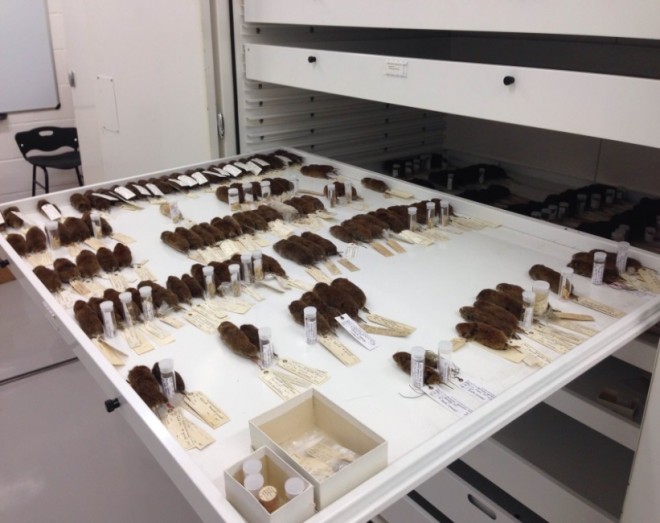Animals from islands tend to have obvious differences, usually in body size and coat pattern, from their mainland counterparts. There are hundreds of smaller islands around mainland Britain, especially to the north and west of Scotland, and they often have their own distinctive mammals. People have long been taking an interest in these island animals and the collections here at National Museums Scotland include hundreds of examples from each of the species found in the British Isles.
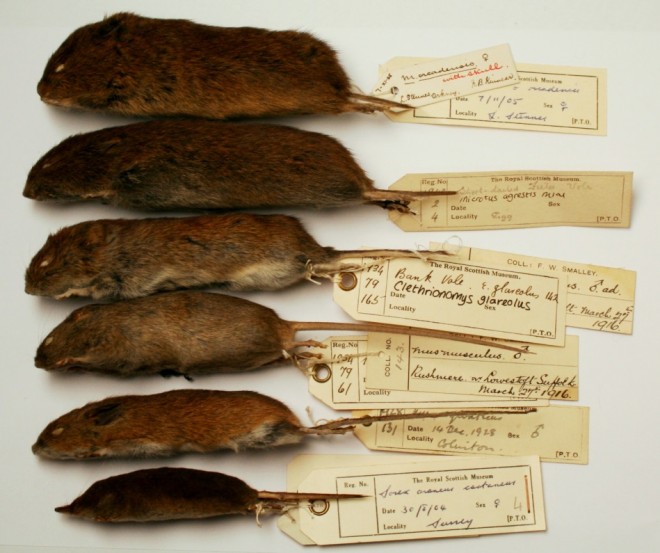
In my usual job as a PhD student at the University of Edinburgh, I work on a population of wild Soay sheep living on St Kilda, which has been studied by the Soay Sheep Project since 1985. However, at the moment I’m taking part in the Professional Internships for PhD Students (PIPS) scheme through my EastBio BBSRC studentship. This gives me the chance to spend three months doing something completely different, so I’m curating these collections of island mammals to make them more accessible to researchers and anyone else who might find them interesting!
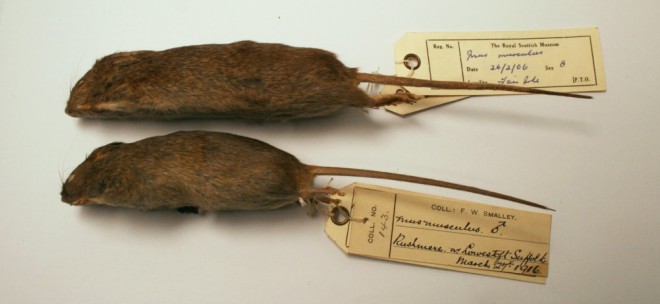
There can be large differences between island and mainland animals of the same species. This house mouse (Mus musculus) collected on Fair Isle (top), is much larger than the house mouse collected on mainland Britain (bottom).
In the early 1900s there was a lot of interest in small mammals from the British mainland and the smaller islands that surround it. The obvious differences in their colour and size posed questions about where these island forms came from and how they relate to the mainland animals. More recently, small differences in skull and other skeletal characters were used to refine these ideas. Now modern methods, including genetic techniques using DNA and statistical analyses of slight differences in skull shape, have brought a new wave of interest and enthusiasm to these questions.
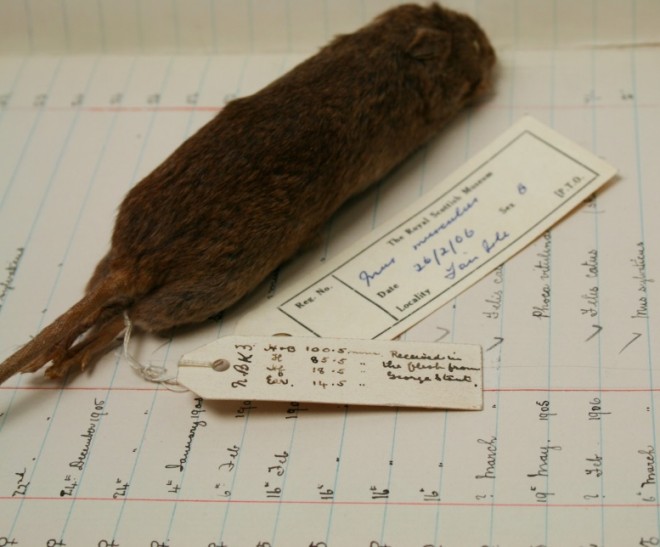
We can find information about a specimen by looking at the labels and looking back at collectors’ notebooks. The handwriting can often be hard to decipher, but there is a lot of useful data to be found there. Sometimes we can verify details by referring back to the original notebooks and museum reference resources.
Part of my job is to find all the relevant information about these specimens and log them into the museum collections database. I record the sex of the specimen, various physical measurements taken at the time of collection, information about the collector and, perhaps most importantly, the specific collection location. I also verify the identification of each specimen to ensure the correct species is catalogued. This can be obvious in some cases, but in others it can require more detailed analysis. For example, I am using differences in the shape of the incisor teeth and the number of tooth sockets (alveoli) to distinguish between the house mouse, Mus musculus, and the wood mouse, Apodemus sylvaticus. I use a low power microscope to look closely at the teeth and upper jaw bone.
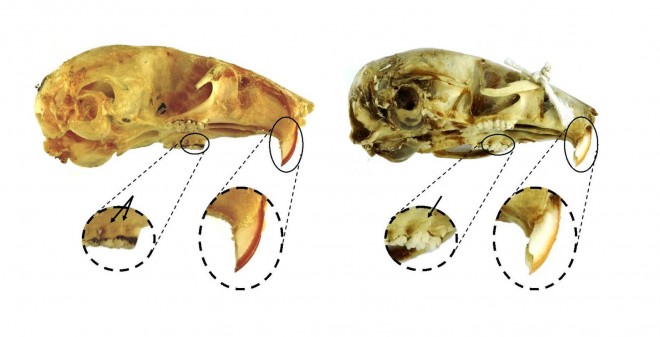
The wood mouse (left) has two inner sockets and no notched incisor, whereas the house mouse (right) has only one inner socket and a notched incisor.
I also try to determine the age of the animal as this will affect its size and shape. In some species this can be done by looking at the amount of wear on the molar (cheek) teeth. As an individual gets older the teeth are worn down by use, becoming relatively smooth and flat compared to those of younger individuals. However, in some species, such as field voles, which feed on vegetation, the teeth grow continuously throughout their life, preventing me from using tooth wear as an ageing technique. In this case we can try to use the skull to tell the age of an individual. For some species, as an individual grows older, a number of changes occur in the skull. One example of this is the merging of two ridges which lie between the eye sockets on the upper area of the skull. In young individuals the two ridges are far apart and then as individuals get older the ridges move closer together and eventually become one.
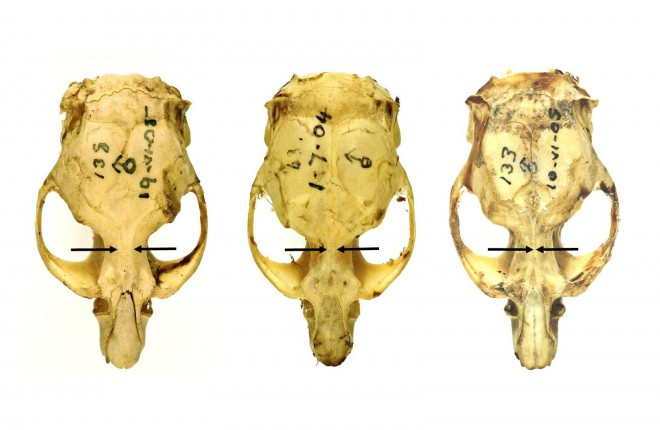
On the left is the skull of a young vole with ridges very far apart and weakly formed. On the right is the skull of an older individual and here we can see how the ridges have merged towards the centre where they meet.
I’m really enjoying working on such an interesting collection. It’s great to be learning so many techniques, especially those which can add more information to the specimens. Together with the Collection Services department I am collating all of the information and including it in the museum database. This will ensure that the information is safely recorded and readily available, especially to the many researchers who make use of the museum collections for their work.
